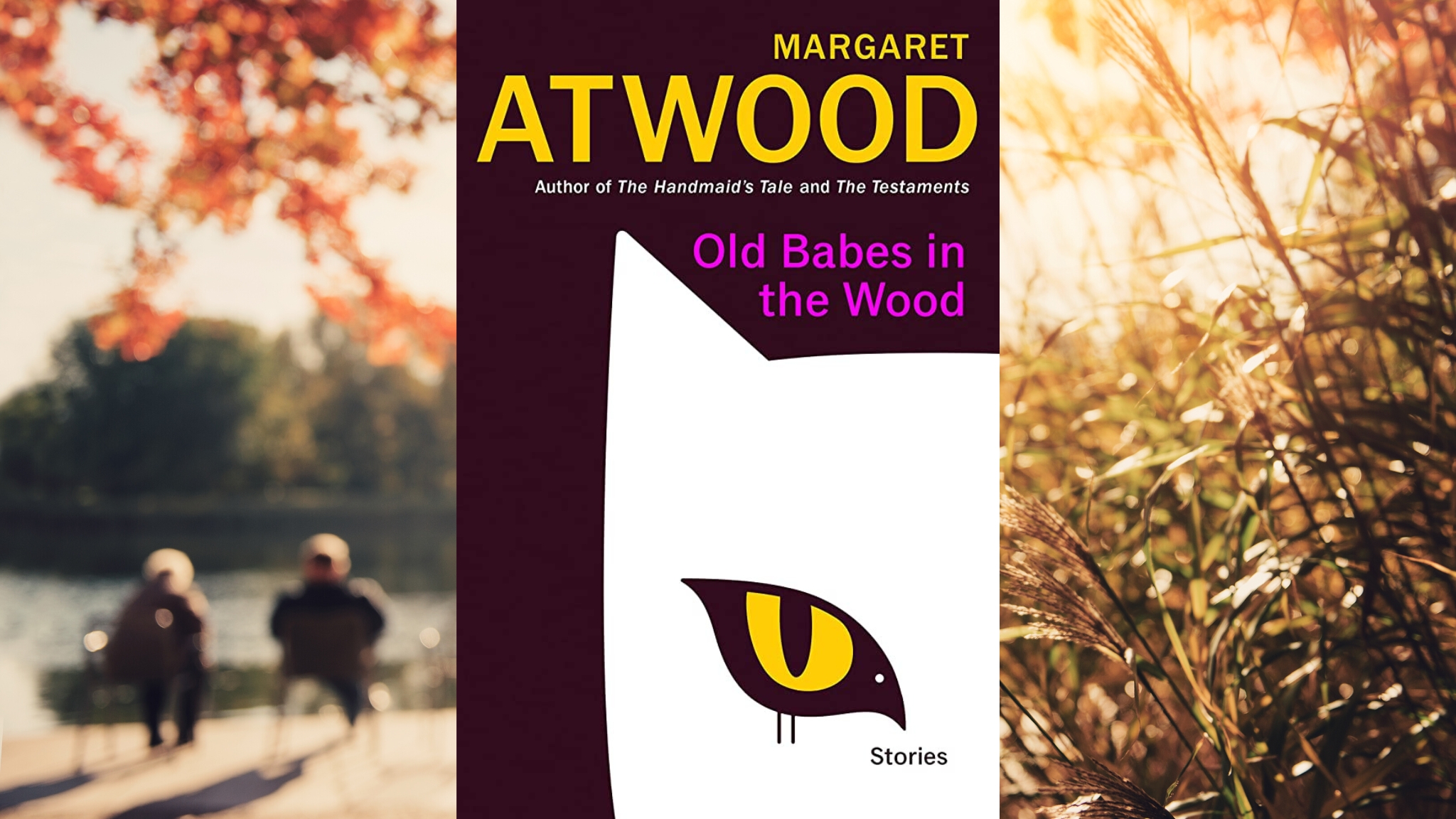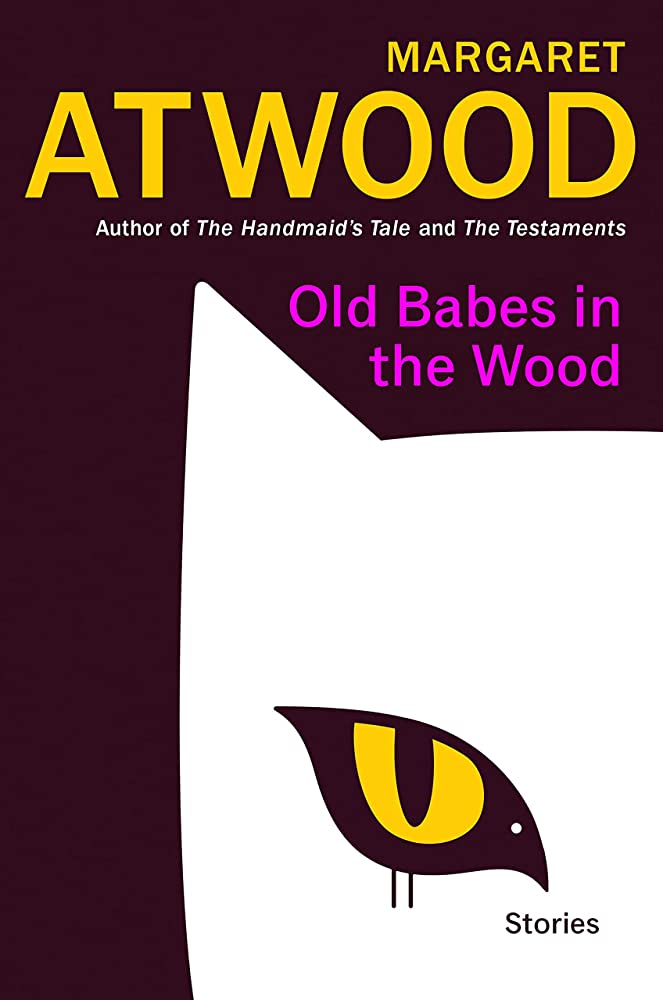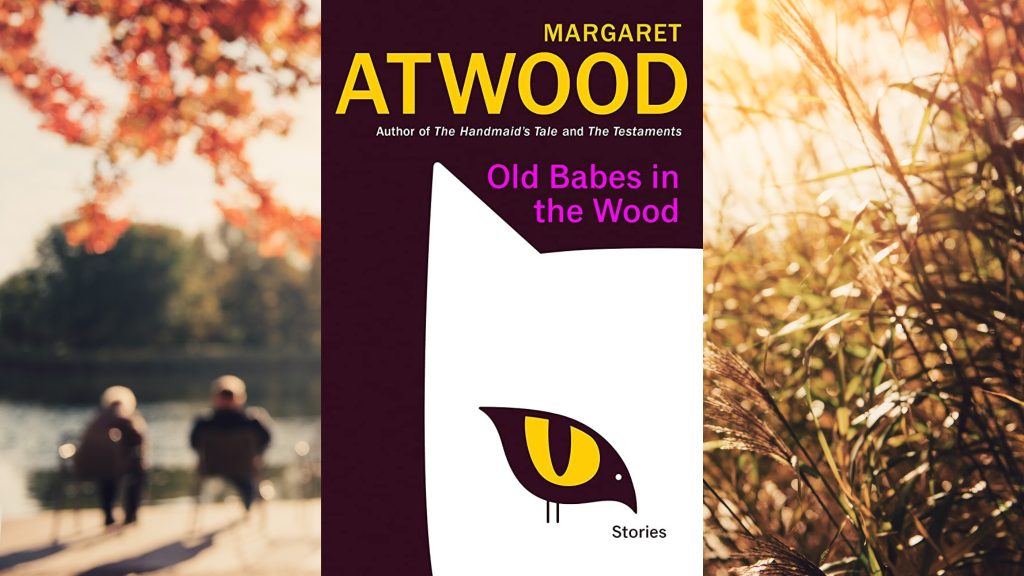
Old Babes in the Wood by Margaret Atwood
What’s it About?
A dazzling collection of short stories from the internationally acclaimed, award-winning author of The Handmaid’s Tale that look deeply into the heart of family relationships, marriage, loss and memory, and what it means to spend a life together.
Old age is a culmination of experience. At 83, Margaret Atwood has seen more than her fair share of good fortune and tragedy to know a thing or two about the subject.
In her first collection of short stories since 2014, Old Babes in the Wood (Penguin Random House), Atwood fully embraces the complicated discussion of old age. Her partner of 46 years, novelist Graeme Gibson, died in 2019, making these stories some of her most personal and reflective.
Stories That Meditate on Long-Lasting Love
As you age, a little self-indulgent rumination seems appropriate. Like remembering a worry — not what the worry was, only that nothing came of it.
Atwood draws on the common absurdity of our anxieties in the first story, First Aid, about longtime couple Nell and Tig, whom we meet at CPR training. During class, the instructor repeatedly stresses the importance of ultimate safety and preparation in all situations, because “you just never know.” But while CPR is a worthy endeavor, the teacher’s enthusiasm for extreme vigilance seems like an excuse to live in fear.
Nell and Tig consider all the times they ventured into the wilderness and told no one; prepared for nothing. How many times had they done the ridiculous and gotten away with it cleanly? Should they have been “safer”? They do know they would’ve had less fun.
Tig and Nell are the hallmarks of the collection, the beginning and the end. It’s easy to wonder how similar they are to Margaret and Graeme, and the results are heart-wrenching.
After Tig’s death, Nell doesn’t recall as well as she would like, admitting that the mind invents things. It’s a humble reminder that all of us are so constantly, endlessly unsure. She wonders: “When had he stopped shaving at all, opting for the whole beard? So difficult to remember such details, although they’d made an impression at the time.”
Tig isn’t Nell’s only source of grief, either. In Morte De Smudgie, an ode to feline love, Nell copes with Smudgie’s death by rewriting Tennyson’s “Morte d’Arthur” with cats in the leading roles. “Grieving takes strange forms,” she says.
The Fluidity of Reality and Other Oddities
While the cornerstone couple may be the solid bookends, Atwood plays around in the pages, mostly with perceived realities. The oddities of the human-animal appear often.
In Metempsychosis: Or, The Journey of the Soul, Atwood tells us of a parted soul previously encased in a shell-bound snail, but recently transferred into a young woman of low corporate standing. This snail soul has questions: Why are humans so hairy? Why must we eat such a varied diet? What is this “work” we do? It really is exhausting! What am I?
The snail detests being human, except for a small detail: “Snails in their own bodies cannot see the stars, but through these borrowed eyes I have now seen them. The stars are magnificent. Perhaps I will have memories of them when I am a snail again, if I am ever permitted that grace.”
Atwood relishes the human luck of being able to observe ourselves objectively in this way, whether by imagined snail or extraterrestrial, as in Impatient Griselda, where our alien captor tells us an “ancient Earth story” via translation device. Or in Freeforall, where a future plague makes kissing a fatal pastime.
Sometimes the stories are after death entirely. In Death by Clamshell, Hypatia of Alexandria narrates her own brutal demise. Then there’s The Dead Interview, a psychic-conducted Q and A with the late George Orwell.
Atwood also dives into family, whether blood or not. A mother’s witchy tales become her life. Friends reminisce and joke about old age. New widows discuss the “curious folding nature of time” amid their grief.
Atwood’s Own Experience Hidden in the Pages
In the last stories, Nell deals with Tig’s loss in war poetry and personal history. She sorts through Tig’s belongings. Discovering a wooden box, she asks: “Why did you leave it behind like that? For me to find?” Despite his death, they still converse often. “Why are you crying? he says. It’s just a box. Thank you. We had a good long run. You’ll be fine.”
Most of us can’t even begin to imagine what loving someone for nearly fifty years is like. To live that long alongside another person takes communication, honesty and a damn good sense of humor. It’s clear Margaret and Graeme shared these in abundance, and the strength of their bond shines through on every page.
Old Babes in the Wood is a beautiful testament to their love. It may be a book centered on loss, but it’s also a self-aware wink to the world and an entertaining celebration of the journey. Atwood’s warm-natured nostalgia shifts frequently between the highs and lows, the joy and devastation of a shared life. No purely somber notes. Everything is love, all at once.
 About Margaret Atwood:
About Margaret Atwood:
Margaret Atwood is the author of more than fifty books of fiction, poetry and critical essays. Her novels include Cat’s Eye, The Robber Bride, Alias Grace, The Blind Assassin, and the MaddAddam trilogy. Her 1985 classic, The Handmaid’s Tale, was followed in 2019 by a sequel, The Testaments, which was a global number one bestseller and won the Booker Prize. In 2020 she published Dearly, her first collection of poetry for a decade.
Atwood has won numerous awards including the Arthur C. Clarke Award for Imagination in Service to Society, the Franz Kafka Prize, the Peace Prize of the German Book Trade, the PEN USA Lifetime Achievement Award and the Dayton Literary Peace Prize. In 2019 she was made a member of the Order of the Companions of Honour for services to literature. She has also worked as a cartoonist, illustrator, librettist, playwright and puppeteer. She lives in Toronto, Canada.

Publish Date: 3/7/2023
Genre: Fiction
Author: Margaret Atwood
Page Count: 365 pages
Publisher: Penguin Random House
ISBN: 9780593677940

